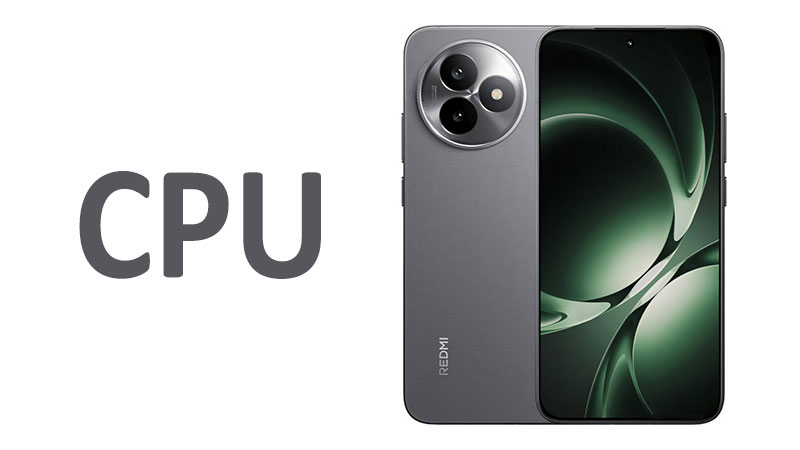The Google Pixel 10 Pro Fold represents a significant leap forward in the foldable smartphone market. While its innovative design and stunning display grab headlines, the true powerhouse behind its performance is the Google Pixel 10 Pro Fold processor, the all-new Tensor G5. This custom-designed chipset is not just about raw power; it’s a meticulously engineered piece of silicon that integrates hardware and software to deliver a unique and intelligent user experience.
This comprehensive review will explore every facet of the Tensor G5’s performance. We will examine its architecture, benchmark scores, and real-world capabilities. From gaming and multitasking to the revolutionary AI features that set it apart, we will provide a complete picture of what this processor brings to the Google Pixel 10 Pro Fold. For anyone considering this flagship foldable, understanding the brain behind the brawn is essential for making an informed decision.
The Google Tensor G5 Chipset
The Google Tensor G5 is a system-on-a-chip (SoC) that marks a new era for Google’s silicon. It is the first Tensor chip to be manufactured by TSMC on a cutting-edge 3nm process. This is a crucial detail. The switch from Samsung to TSMC allows for greater transistor density and improved efficiency. This change directly translates to better performance and a more power-efficient device.
The Tensor G5 is built with a sophisticated CPU. It features an octa-core configuration: 1×3.1 GHz Cortex-X4, 3×2.6 GHz Cortex-A720, and 4×1.92 GHz Cortex-A520. This is a different core layout from previous Tensor generations. It is designed to balance peak performance with everyday efficiency. The Mali-G715 MC7 GPU handles graphics processing. This updated GPU is part of Google’s plan to deliver a major performance boost across the board.
Performance and Benchmarks: A Tale of Two Stories
When evaluating the Google Pixel 10 Pro Fold processor, it’s important to look beyond just the numbers. While benchmark scores provide a valuable comparison, they don’t always tell the whole story. The Tensor G5 shows significant gains over its predecessor, the Tensor G4. However, it still trails the most powerful competitors in pure synthetic benchmarks.
In Geekbench 6, leaked scores for the Tensor G5 show a notable improvement. It scores around 2,296 in single-core tests and 6,203 in multi-core tests. This represents a solid 22% increase in single-core and a 43% increase in multi-core performance compared to the Tensor G4. These are impressive gains that will be felt in daily use. The phone feels faster and more responsive for browsing, opening apps, and multitasking.
However, when compared to rival chips like the Snapdragon 8 Elite, the Tensor G5 is still behind. The Snapdragon 8 Elite achieves much higher scores, often by a significant margin. For power users and gamers, this gap is important. The Pixel 10 Pro Fold is not designed to win a pure performance race. Its focus is on a different kind of power—the power of on-device artificial intelligence.
On-Device AI: The True Strength of the Tensor G5
The Tensor G5’s most significant advantage lies in its Tensor Processing Unit (TPU). This specialized hardware is dedicated to machine learning and AI tasks. Google claims the new TPU is up to 60% more powerful than the previous generation. This is where the Google Pixel 10 Pro Fold processor truly shines.
The chip is the first to run the newest Gemini Nano model directly on the device. This on-device processing has a profound impact. It allows AI-driven features to run 2.6 times faster and twice as efficiently. Features like “Magic Cue” and advanced real-time translation happen almost instantly without needing a cloud connection. The new Image Signal Processor (ISP) also works with the TPU. It delivers substantial improvements in computational photography. This means better low-light video, more accurate skin tones with Real Tone, and advanced features like “Pro Res Zoom” with up to 100x magnification.
The integration of the Tensor G5 with the Titan M2 security chip is also a key feature. It enables C2PA Content Credentials to be embedded securely into images. This creates a verifiable record of an image’s origin and edit history. This feature is a powerful tool for combating misinformation. It is a perfect example of Google’s hardware and software working together for a real-world benefit.
Specialized Comparisons: Tensor G5 vs. The Competition
To fully appreciate the Google Pixel 10 Pro Fold processor, it’s helpful to see how it stacks up against its rivals.
- Tensor G5 vs. Tensor G4: This is a clear win for the G5. The jump to a 3nm process from TSMC provides major gains in performance and efficiency. Users upgrading from the Pixel 9 Pro Fold will notice a significant improvement in overall speed and battery life. The G5 also enables a new suite of AI features that were not possible on the G4.
- Tensor G5 vs. Snapdragon 8 Elite: This is where the philosophical difference becomes clear. The Snapdragon 8 Elite is the king of raw CPU and GPU performance. It dominates in synthetic benchmarks and is the ideal choice for mobile gamers and content creators who need maximum horsepower. The Tensor G5, on the other hand, prioritizes AI and software optimization. While the Snapdragon is a raw muscle chip, the Tensor is a smart chip. It focuses on making everyday tasks more intelligent and seamless.
- GPU Performance: The Mali-G715 MC7 GPU is a point of contention for some. Early benchmarks suggest that the GPU performance, especially for gaming, might not be a significant leap forward. Some reports even indicate that it may lag behind its predecessor in certain graphical tests. While this could be resolved with driver updates, it’s a concern for dedicated mobile gamers. The lack of hardware-accelerated ray tracing also puts it behind some competitors.
Pros and Cons of the Tensor G5 Processor
Pros:
- Exceptional AI Performance: The Tensor G5 is a leader in on-device AI. Its powerful TPU enables incredibly fast and efficient machine learning features. This is a game-changer for Google’s software.
- Improved Efficiency: The move to TSMC’s 3nm process makes the G5 more power-efficient. This contributes to the Pixel 10 Pro Fold’s impressive battery life, which Google claims can last over 30 hours.
- Seamless Hardware-Software Integration: The processor is custom-built for the Pixel’s software. This tight integration ensures a smooth and optimized user experience. It’s what allows for unique features like advanced computational photography and on-device Gemini Nano.
- Significant Leap Over Predecessor: The G5 provides a substantial performance boost over the Tensor G4. It makes the Pixel 10 Pro Fold a much more competitive device.
- Enhanced Security: The deep integration with the Titan M2 security chip provides industry-leading security features. This includes the on-device processing of C2PA Content Credentials.
Cons:
- Lags in Raw Performance: In a head-to-head performance contest, the Tensor G5 falls short of flagship chips from Qualcomm and Apple. This will be a deterrent for users who prioritize raw speed above all else.
- Questionable GPU Performance: Initial benchmark leaks show that the Mali GPU might not be a major upgrade for gaming. This could impact the experience for high-end mobile games.
- Limited Customization for Enthusiasts: The tightly integrated nature of the Tensor G5 means less flexibility for advanced users who might want to tinker with their device’s performance.
Essential Points for Buyers and Readers
The Google Pixel 10 Pro Fold processor is a defining feature of the device. Here are some key takeaways for potential buyers and readers:
- It’s an “AI-First” Processor: This chip is not just about raw speed. It is built from the ground up to handle complex AI and machine learning tasks on the device. This focus on intelligence over brute force is what sets it apart.
- Real-World Performance is Excellent: Despite lagging in synthetic benchmarks, the Tensor G5 provides a fast and fluid real-world experience. For daily tasks like web browsing, social media, and multitasking, the performance is top-tier.
- The AI Features are not Gimmicks: The on-device Gemini Nano and powerful TPU enable features that are truly useful. They improve the camera, enhance productivity, and make the phone feel more personal and intuitive.
- Gamers Should Consider Alternatives: If your primary use case is high-end mobile gaming, you might be better served by a phone with a Snapdragon or A-series processor. While the Tensor G5 can handle most games, its GPU performance is not its strongest suit.
- Battery Life is a Major Plus: The efficiency improvements of the 3nm process, combined with a large battery and Google’s software optimizations, result in exceptional battery life. This is a crucial factor for a foldable device.
Final Summary and Conclusion
The Google Pixel 10 Pro Fold processor, the Tensor G5, is a masterful piece of engineering that perfectly aligns with Google’s vision for the Pixel brand. It is a processor built for intelligence, not just for power. While it may not win every benchmark battle against its rivals, it excels in the areas that matter most to the modern smartphone user: AI-driven features, security, and a seamless, intuitive user experience.
The shift to a TSMC 3nm process is a game-changer. It delivers a much-needed boost in both performance and efficiency. This makes the Pixel 10 Pro Fold a more responsive and long-lasting device. The powerful TPU and on-device Gemini Nano capabilities are where this chip truly sets itself apart. They enable a new class of smart features that are faster and more private than ever before.
For the user who values a smart, secure, and highly-optimized smartphone experience, the Google Pixel 10 Pro Fold processor is a triumph. It is the perfect engine for a device that prioritizes what’s truly important: making your digital life easier and more intelligent. While hardcore gamers might look elsewhere, for everyone else, the Tensor G5 is an impressive and forward-thinking piece of technology. It solidifies the Pixel 10 Pro Fold as a top contender in the foldable market.
FAQ
What is the CPU configuration of the Google Tensor G5 processor?
The Tensor G5 has an octa-core CPU. It consists of one 3.1 GHz Cortex-X4 core, three 2.6 GHz Cortex-A720 cores, and four 1.92 GHz Cortex-A520 cores.
How does the Tensor G5 compare to the previous Tensor G4?
The Tensor G5 is a significant upgrade over the G4. It offers up to a 34% faster CPU and a 60% more powerful Tensor Processing Unit (TPU). This is largely due to the switch to a more efficient 3nm manufacturing process by TSMC.
Is the Google Pixel 10 Pro Fold good for gaming?
While the Pixel 10 Pro Fold can handle most games, its GPU performance may not be on par with rivals like the Snapdragon 8 Elite. Dedicated mobile gamers might find other devices to be a better fit for high-end titles.
What are the main benefits of the Tensor G5’s AI capabilities?
The Tensor G5’s AI capabilities enable a wide range of features. These include faster on-device translation, advanced computational photography, and proactive assistance with features like “Magic Cue” and “Gemini Nano.”
Does the Tensor G5 improve battery life on the Pixel 10 Pro Fold?
Yes. The Tensor G5 is manufactured on a more efficient 3nm process. This, combined with Google’s software optimizations, helps the Pixel 10 Pro Fold achieve a longer battery life, with Google claiming over 30 hours of use.


